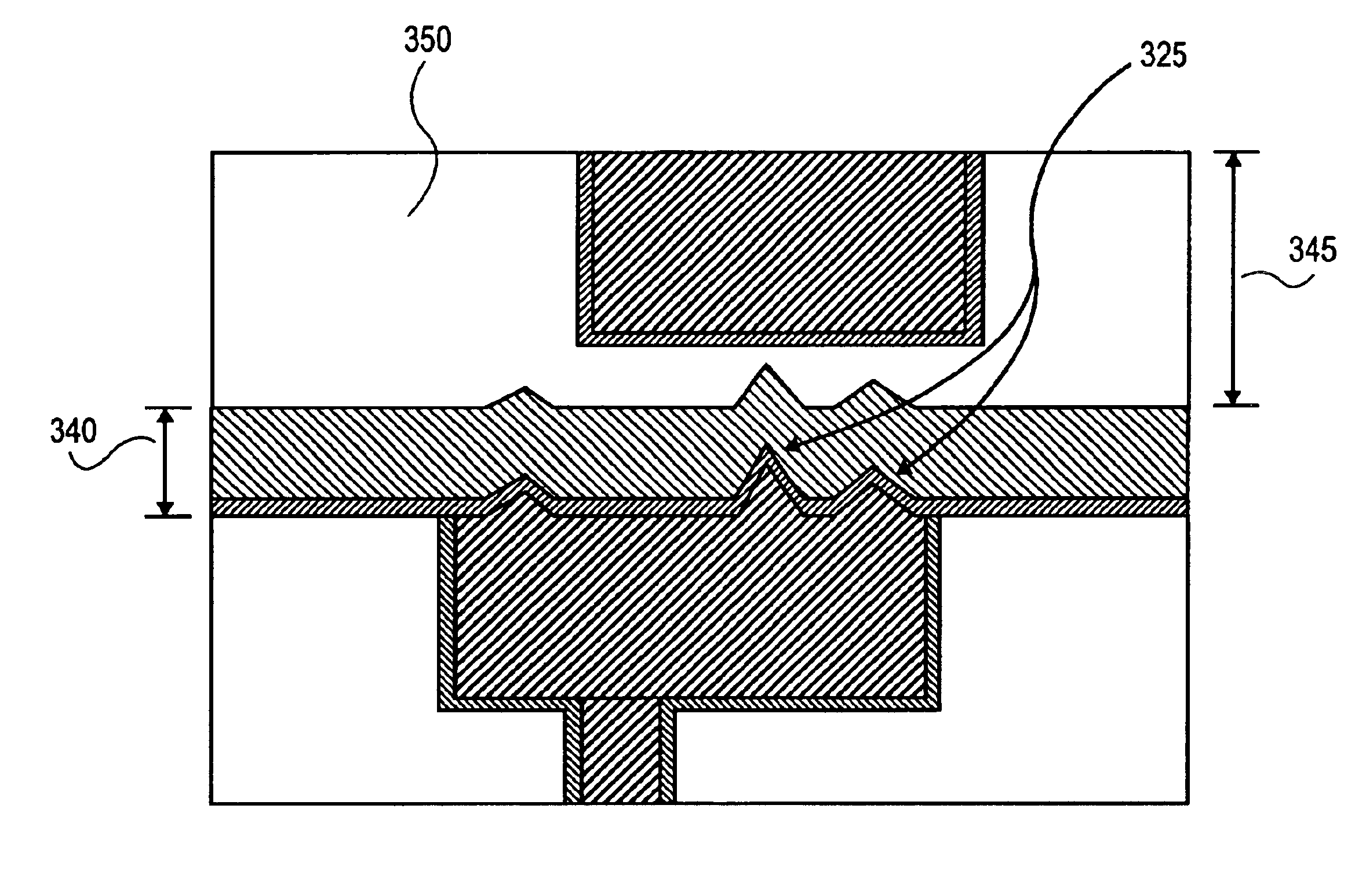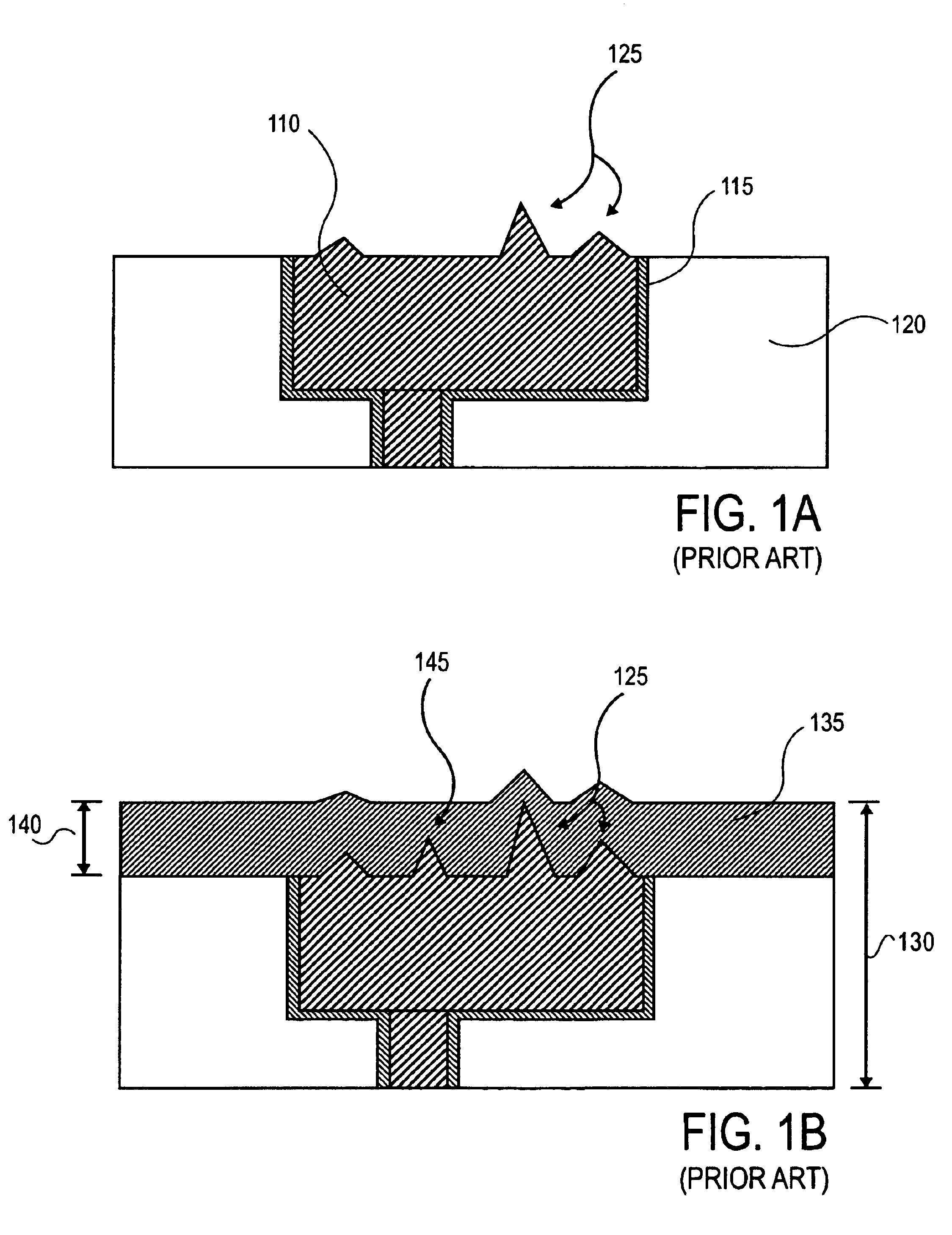Methods and devices for the suppression of copper hillock formation
a technology of suppression method and copper hillock, which is applied in the direction of circuit arrangement, emergency protective circuit arrangement, electrical equipment, etc., can solve the problems of increasing the thickness of the ild, early breakdown of the semiconductor device, and formation of copper hillocks
- Summary
- Abstract
- Description
- Claims
- Application Information
AI Technical Summary
Problems solved by technology
Method used
Image
Examples
Embodiment Construction
Methods for the prevention of copper hillocks and devices constructed using such methods are described. In the following description numerous specific details are set forth to provide an understanding of the embodiments of the present invention. It will be apparent, however, to those skilled in the art and having the benefit of this disclosure, that the embodiments of the present invention may be practiced with materials and processes that vary from those specified here.
Copper hillocks are a significant problem in semiconductor devices made with copper. Copper hillocks can cause shorts and voids in copper dual damascene structures and cause the shorting and the early breakdown of metal-insulator-metal (MIM) capacitors. MIM capacitors are especially sensitive to copper hillocks. Therefore, embodiments of the present invention provide methods of preventing the formation of copper hillocks in dual damascene structures and MIM capacitors. One such method is a ramped dielectric depositio...
PUM
 Login to View More
Login to View More Abstract
Description
Claims
Application Information
 Login to View More
Login to View More - R&D
- Intellectual Property
- Life Sciences
- Materials
- Tech Scout
- Unparalleled Data Quality
- Higher Quality Content
- 60% Fewer Hallucinations
Browse by: Latest US Patents, China's latest patents, Technical Efficacy Thesaurus, Application Domain, Technology Topic, Popular Technical Reports.
© 2025 PatSnap. All rights reserved.Legal|Privacy policy|Modern Slavery Act Transparency Statement|Sitemap|About US| Contact US: help@patsnap.com



